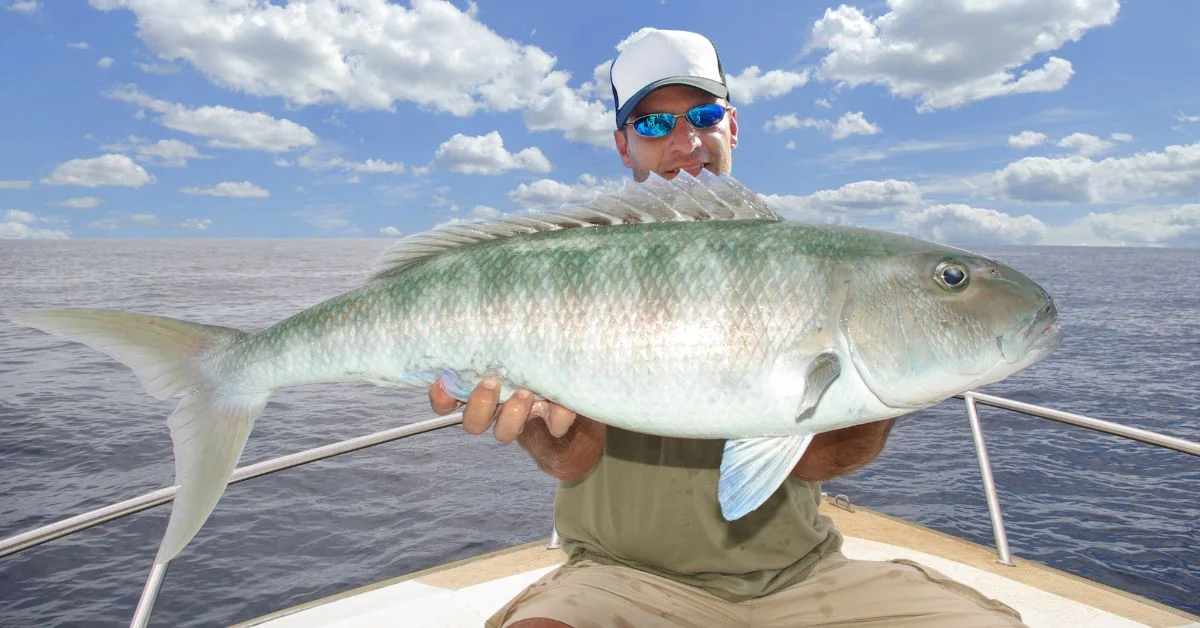Escolar, scientifically known as Lepidocybium flavobrunneum, is a fascinating species of deep-sea fish found in tropical and temperate waters worldwide. Known for its succulent, oily flesh and unique taste, escolar is prized in culinary circles and is sometimes labeled as “butterfish” or “white tuna.” However, while its rich flavor has made it popular, escolar also comes with notable health considerations, including risks related to its high oil content. This article delves into the biology, culinary uses, health implications, and best practices for consuming escolar safely.
Biology and Habitat
Escolar thrives in the deep waters of the world’s oceans, inhabiting depths between 200 and 885 meters (656 to 2,904 feet). Its robust, elongated body, dark coloration, and distinctive lateral keel make it easily recognizable. As the fish matures, its color transitions from a deep brown to a striking black. Growing up to 2 meters (approximately 6.5 feet) in length, escolar is a powerful swimmer and an apex predator in its environment.
An intriguing feature of escolar’s biology is its diet, which is rich in prey containing wax esters. Unlike many other fish species, it cannot efficiently metabolize these compounds, leading to an accumulation of wax esters, also known as gempylotoxin, in its flesh. This high concentration of wax esters gives escolar its rich, oily texture and buttery flavor, which are highly sought after in the culinary world.
Culinary Uses and Market Mislabeling
This is considered a delicacy in many parts of the world due to its buttery texture and unique taste. In restaurants and markets, it is often marketed under names like “butterfish” or “white tuna,” making it an attractive option for seafood lovers. However, these labels can be misleading and have resulted in cases of misidentification. For example, studies have revealed that a significant percentage of fish labeled as “white tuna” in sushi restaurants is, in fact, escolar.
This mislabeling can have unintended consequences, as consumers may unknowingly consume Lepidocybium flavobrunneum without understanding the potential health risks. While its rich flavor makes it an excellent addition to sushi and sashimi platters, escolar should be approached with caution due to its unique composition and potential side effects.
Health Implications
The wax esters found in escolar’s flesh, though responsible for its desirable taste and texture, pose health risks when consumed in large quantities. These esters can lead to a condition called keriorrhea, characterized by gastrointestinal symptoms such as stomach cramps, diarrhea, and oily anal leakage. This condition typically occurs within 30 minutes to 36 hours after consumption and is a direct result of the human body’s inability to digest wax esters.
To minimize the risk of experiencing keriorrhea, experts recommend limiting portion sizes of escolar to no more than 170 grams (approximately 6 ounces) per serving. Additionally, cuts from the tail section of the fish tend to have lower concentrations of wax esters, making them a safer choice for consumption. While some believe that preparation methods such as deep skinning, freezing, or grilling can reduce wax ester levels, there is conflicting evidence regarding the effectiveness of these techniques.
Regulatory and Legal Status
Due to the health concerns associated with its consumption, several countries have implemented regulations regarding the sale and distribution of escolar.
- Japan: It has been banned since 1977, with authorities deeming it toxic due to the wax ester content.
- Italy: The sale of Lepidocybium flavobrunneum is also prohibited, reflecting similar concerns about its safety.
- United States: While the Food and Drug Administration (FDA) does not outright ban escolar, it advises against its marketing in interstate commerce and encourages consumer awareness of the associated risks.
These regulations highlight the need for caution when consuming or selling escolar. Understanding the legal status of the fish in various regions can help consumers and businesses make informed decisions.

Mislabeling and Consumer Awareness
The issue of mislabeling Lepidocybium flavobrunneum as other fish species, particularly “white tuna,” remains a significant challenge. Studies have found that a substantial percentage of fish labeled as “white tuna” in restaurants and markets is actually escolar. This misrepresentation not only deceives consumers but also increases the likelihood of adverse reactions among unsuspecting individuals.
To address this issue, consumers are encouraged to ask questions about the fish they are purchasing or consuming, particularly in restaurants or markets where labeling may not be accurate. By staying informed and vigilant, individuals can avoid potential health issues and make better dietary choices.
Culinary Tips
For those who wish to enjoy the unique flavor of escolar while minimizing health risks, the following tips are recommended:
- Limit Portion Sizes: Restrict servings to 170 grams (6 ounces) or less to reduce the risk of keriorrhea.
- Select the Right Cuts: Choose cuts from the tail section of the fish, which tend to have lower wax ester content.
- Be Informed About Preparation: While there is conflicting evidence about whether cooking methods can reduce wax ester levels, it is always best to prepare escolar with care.
- Verify Labeling: When purchasing or ordering these fish, inquire about its identification to ensure it has not been mislabeled.
By following these guidelines, consumers can enjoy the culinary benefits of escolar without compromising their health.
Sustainability and Ethical Considerations
It’s popularity in the seafood industry has raised concerns about its sustainability and the environmental impact of its harvesting. Like many deep-sea species, Lepidocybium flavobrunneum is susceptible to overfishing, as it takes years to reach maturity and reproduce. Sustainable fishing practices and responsible consumption are essential to ensure the long-term health of escolar populations and marine ecosystems.
When purchasing escolar, look for sources that prioritize sustainability and adhere to ethical fishing standards. Supporting businesses that practice sustainable fishing can help protect the species and its habitat while promoting a more responsible seafood industry.
Conclusion
Escolar is a unique and flavorful fish that has gained recognition for its rich, buttery taste. However, its high wax ester content poses health risks, making it essential for consumers to approach its consumption with caution. By limiting portion sizes, choosing appropriate cuts, verifying labeling, and staying informed about its potential effects, individuals can enjoy escolar safely and responsibly.
As consumer awareness grows and regulations become more stringent, the risks associated with Lepidocybium flavobrunneum can be mitigated, allowing it to remain a valued delicacy in the culinary world. Staying informed and making conscious choices are key to appreciating the benefits of escolar without compromising health or sustainability.
FAQs
What is escolar, and why is it unique?
Esc0lar (Lepidocybium flavobrunneum) is a deep-sea fish known for its rich, oily flesh and unique buttery flavor. Its high wax ester content sets it apart, contributing to its texture and taste.
What are the health risks of consuming escolar?
The wax esters in escolar can cause keriorrhea, a condition characterized by gastrointestinal symptoms such as stomach cramps and oily diarrhea. These effects occur due to the body’s inability to digest the wax esters.
How can I safely consume escolar?
To minimize health risks, limit portion sizes to 170 grams (6 ounces) or less and select cuts from the tail section, which contain lower wax ester concentrations.
Why is escolar banned in some countries?
Countries like Japan and Italy have banned this fish due to health concerns related to its high wax ester content, which can cause adverse gastrointestinal effects.
Is escolar often mislabeled in markets?
Yes, this is frequently mislabeled as “white tuna” or “butterfish” in markets and restaurants, which can lead to unintentional consumption and associated health risks.
What are the sustainability concerns regarding escolar?
Like many deep-sea species, this is vulnerable to overfishing due to its slow growth and late maturity. Sustainable fishing practices are essential to protect its populations and marine ecosystems.









